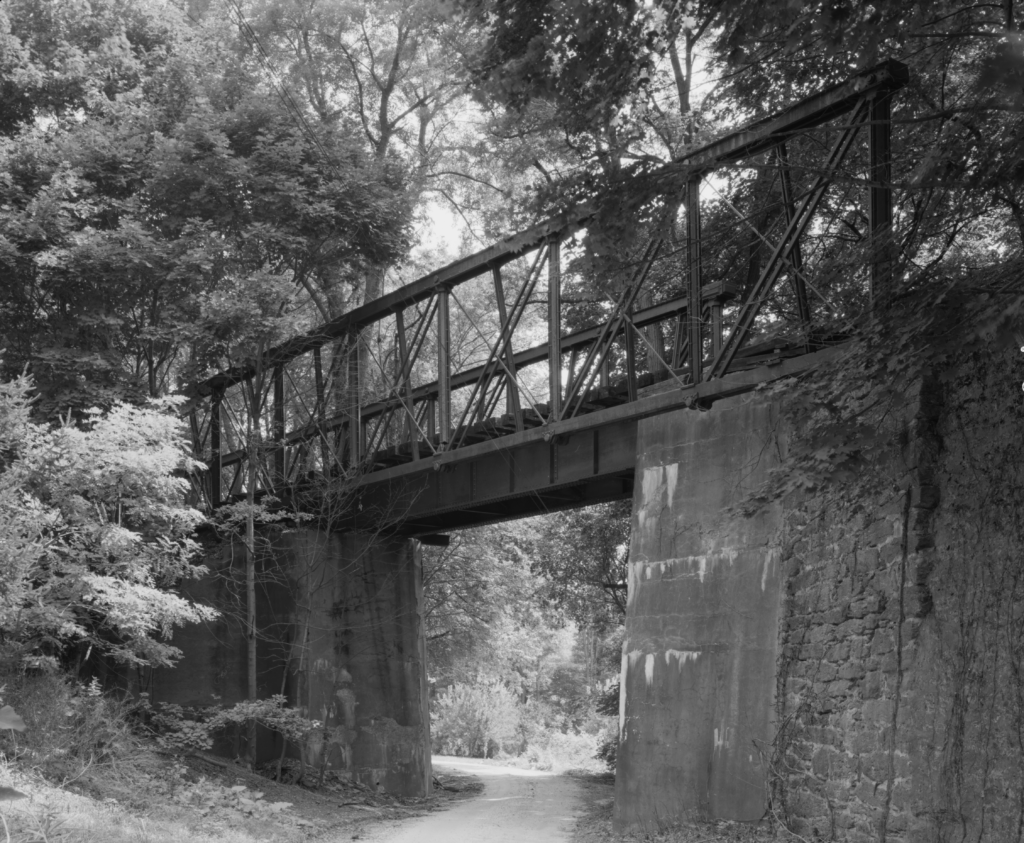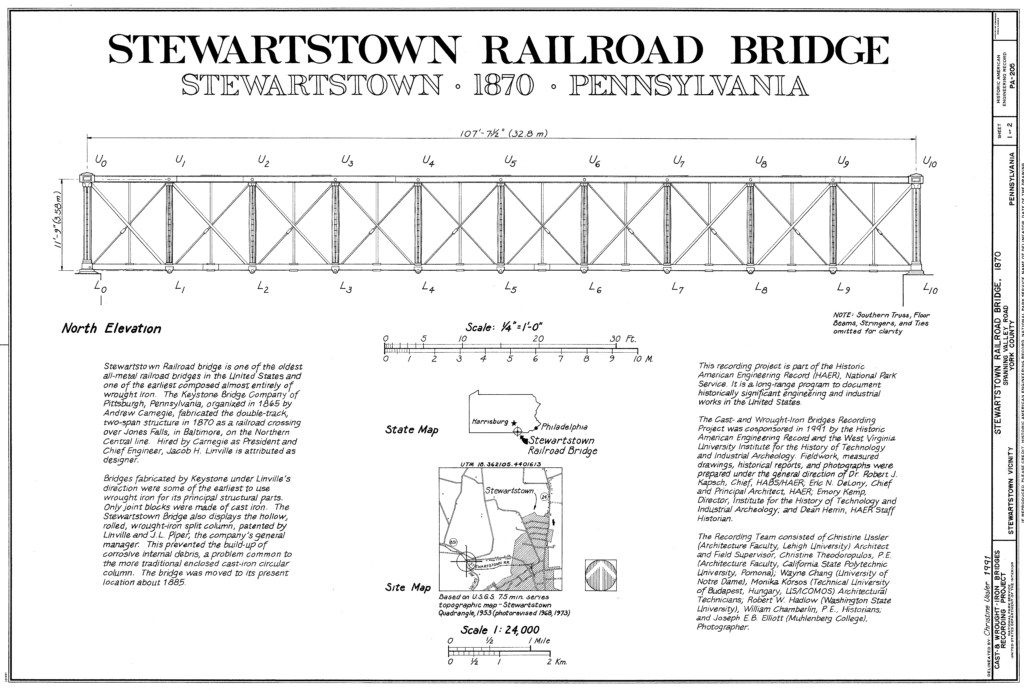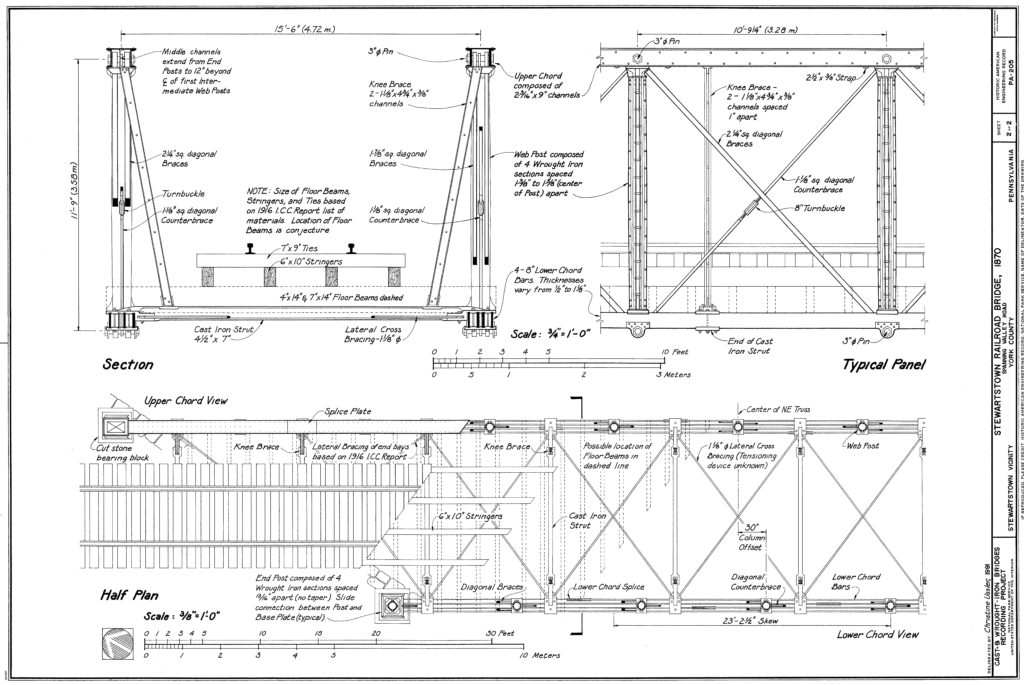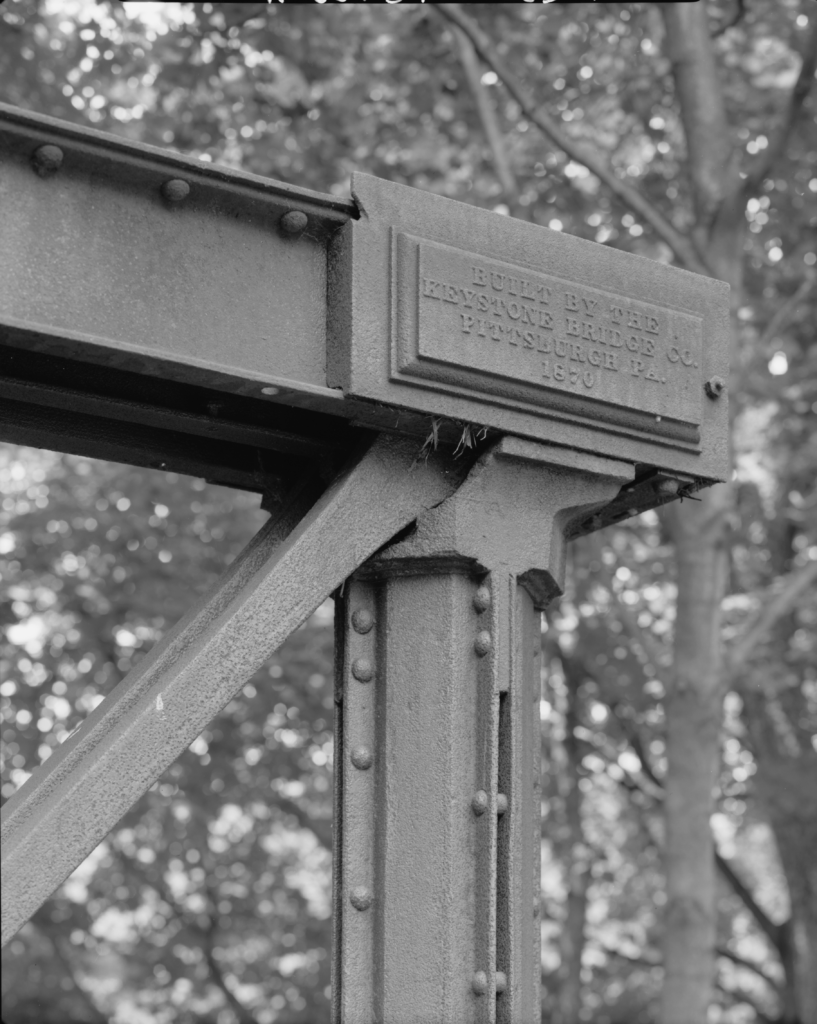
This Pratt truss is one of the earliest bridges in the U.S. to be constructed almost entirely of wrought iron that still exists. Originally built by the Keystone Bridge Company in 1870 to span Jones Falls in Baltimore, one of the two spans was moved to Stewartstown, Pennsylvania in 1885. [1]

The Pennsylvania Railroad often reused mainline bridges that it replaced on short lines it either owned or controlled, such as the Stewartstown Railroad Company.

Chartered in 1884 by Stewartstown citizens to connect their town with the nearby North Central Railroad, the Stewartstown Railroad Company was a seven and a half mile route with steep grades and sharp curves and many bridges such as the repurposed Jones Falls span. Spanning both a local road and Ebaugh’s Creek at an angle, the Pennsylvania Railroad had to modify the Keystone structure by cutting its deck beams and offsetting the trusses by two and one-half panels.

In the 1920s a steel deck girder span was added that made the truss panels redundant, but the truss components, including Keystone’s patented octagonal wrought iron columns were left intact.
[1] This bridge was recorded as part of the Historic American Engineering Record, a program of the National Park Service. The long-range program documents historically significant engineering and industrial works in the United States. The Cast and Wrought Iron Bridges recording project was co-sponsored in 1991 by the West Virginia Institute for the History of Technology and Industrial Archaeology. Fieldwork was completed under the direction of Dr. Robert J. Kapsch, chief of HABS/HAER; Eric N. DeLony, HAER chief and principal architect; Emory L. Kemp, dirctor of the Institue for the History of Technology and Industrial Architecture; and Dean Herrin, HAER staff historian.
The field recording team consisted of Christine Ussler, Lehigh University, architect and field supervisor; Christine Theodoropoulos, California State Polytechnic University; Wayne Chang, University of Notre Dame; Monika Korsos, Technical University of Budapest, architectural technicians; Robert W. Hadlow, Washington State University; William Chamberlin, P.E., historians; Photography was performed by Joseph E. B. Elliott, Muhlenberg College.